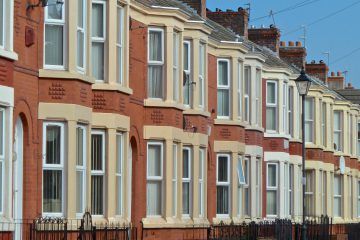Mortgage broker Private Finance has revealed which town or city takes the crown as the UK’s top buy-to-let hotspot in October…
New analysis by the broker has named Southend-on-Sea as the UK’s top buy-to-let hotspot, offering an average rental yield of 6.6% once mortgage costs are taken into account.
With an average annual rental income of £23,280, landlords in Southend-on-Sea enjoy a lucrative return for a relatively small upfront investment, with house prices in the area only slightly higher than the national average (£279,358, compared to £231,000).
While a seaside town takes the UK’s top buy-to-let hotspot, UK cities dominate the rest of the top ten. Nottingham came in in second place, while Edinburgh, Greater Manchester, Liverpool, and the London boroughs of Westminster, Tower Hamlets and Camden all enjoy some of the UK’s highest net yields. Home to significant populations of university students and young professionals, these urban locations have high tenant demand, which helps to bolster rent prices.
The UK’s top buy-to-let hotspot
| Location |
Average house price |
Average monthly rent price |
Average rental yield |
| Southend-on-Sea |
£279,358 |
£1,940 |
6.6% |
| Nottingham |
£137,835 |
£928 |
6.4% |
| Westminster |
£970,990 |
£5,554 |
5.1% |
| Edinburgh |
£254,170 |
£1,410 |
4.9% |
| Greater Manchester |
£167,928 |
£911 |
4.8% |
| Liverpool |
£136,521 |
£725 |
4.6% |
| Tower Hamlets |
£473,327 |
£2,447 |
4.5% |
| Camden |
£810,708 |
£4,178 |
4.5% |
| Coventry |
£185,990 |
£952 |
4.4% |
| Southampton |
£212,155 |
£1,045 |
4.2% |
Shaun Church, the Director of Private Finance, comments on the report: “Southend is a popular spot for renters, with all the benefits of living in a popular seaside town less than an hour’s commute from central London, and with good airport connections.
“With the high cost of renting pricing many out of the city, towns in a commutable distance from London that offer a more relaxed lifestyle at an affordable price are becoming increasingly popular among young professionals. Rental demand is likely to grow in these pockets outside of London, offering good opportunities for buy-to-let investors.”
House prices as influential as rental income

The UK’s Top Buy-to-Let Hotspot has been Revealed
The analysis, which calculates rental yields in the 50 UK towns and cities with the highest proportion of private rental housing stock, highlights that house prices and mortgage costs can be just as influential as rental income when assessing the best locations to invest in.
While four out of ten areas with the highest rental yields also have some of the highest house prices (Westminster, Camden, Tower Hamlets and Southend-on-Sea), an equal number of areas with the lowest house prices also feature in the top ten list.
Liverpool, Nottingham, Greater Manchester and Coventry all feature in the top ten and benefit from some of the lowest house prices in the UK, suggesting that buy-to-let investors should not only consider potential rental income when assessing where to invest.
This is also encouraging news for hopeful investors with smaller sums to invest with, demonstrating that you don’t need to spend millions to secure a lucrative property investment.
Buy-to-let mortgage rates at near record lows
While landlords have been hit by a raft of tax changes, including higher rates of Stamp Duty and restricted mortgage interest tax relief, buy-to-let mortgage rates have been gradually falling, with lenders introducing lower rates in a bid to galvanise the market.
Bank of England data shows that the average buy-to-let mortgage rate in September (2.31%) was close to its most affordable level (2.27% in August 2018) since the statistics were first published in 2012. This helps to improve the profitability of buy-to-let investments across the UK.
Based on a 75% loan-to-value mortgage against the average UK house price, landlords’ typical interest-only repayments have dropped by 54% since 2012, from £733 per month to £334, meaning that those who have remortgaged onto today’s competitive rates could be set to enjoy an annual saving of £4,788 compared to six years ago.
Church continues: “While recent Stamp Duty changes in the sector may have dampened landlords’ appetite, our analysis shows buy-to-let still remains a viable and lucrative investment. Strong rental incomes, matched with declining mortgage costs, mean that landlords can still enjoy a level of return on their investment they’d be hard pressed to find elsewhere.
“When considering a buy-to-let investment, location is often the most important factor determining the yields investors enjoy. While investors may be wooed by the prospect of strong rental income, house prices can be just as influential in determining rental yield. Looking for areas with opportunities for house price growth can also provide landlords with the added benefit of a profit from the eventual sale of their property, in addition to a regular monthly rental income.”
He concludes: “Whether it’s through a limited company or a personal purchase, there are a number of ways to buy a buy-to-let property, all of which have varying financial implications, such as tax. There’s no one-size-fits-all approach to purchasing buy-to-let. Enlisting the advice of an independent mortgage broker will help ensure your investment is as profitable as possible.”






